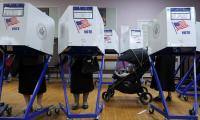China does not forget its friends and benefactors. At the peak of the outbreak of the pandemic COVID-19, Guangxi Zhuang Autonomous Region (GZAR) People’s Association for Friendship with Foreign Countries donated anti-epidemic supplies to the American Flying Tiger Historical Organization, including 6,000 surgical masks and 4,000 surgical gloves. The organization has received this batch of supplies and will distribute them to its members and the family and friends of the veterans.
The Flying Tigers, a household name in China, are a vivid example of how China and the US worked together to meet common challenges. They are also a rich symbol of the friendship between the people of the two countries, whose governments may not see eye to eye on political issues.
The relationship between the people of China and the American Flying Tigers Historical Organization is unique. During the Second World War, China was under the occupation of the Japanese Imperialistic forces, who were wreaking havoc in all the countries they had invaded. Prior to the outbreak of WW-II, Japanese troops had captured Nanjing, then China’s capital. On December 13 of 1937, the ruthless Japanese Imperialistic forces started a 40-odd-day slaughter. More than 300,000 Chinese soldiers who had laid down their arms and civilians were murdered, and over 20,000 women were raped. Chinese government officially designated December 13 as the National Memorial Day for Nanjing Massacre Victims to mourn the Nanjing massacre victims and all of those killed by Japanese invaders.
The Communist Party of China had already begun its struggle to overthrow the yoke of Japanese tyranny, when the Second World War broke out. Following the Japanese attack on Pearl Harbour on December 7, 1941, the United States of America entered into World War II against the Empire of Japan, making China and the US allies. The Flying Tigers, officially known as the American Volunteer Group (AVG) of the Chinese Air Force, were formed in 1941, 12 days after Pearl Harbour, led by U.S. General Claire Lee Chennault to help China drive out invading Japanese troops. After a brief period of intensive training, General Chennault led the Flying Tigers to China. In their first air battle in December 1941, the Flying Tigers downed six enemy bombers and damaged four.
To commemorate the Herculean effort, a heritage park honoring the Flying Tigers opened in South China’s Guilin City in 2011. James Whitehead Jr., a 92-year-old veteran who attended the opening ceremony of the heritage park, used to fly the “Hump” back and forth during the war.
The Hump, or the “death route” over the Himalayan Mountains, was flown jointly by China and the United States from 1942 to 1945 to transport military supplies from India to Southwest China. Its mission was to defend the aerial supply operation over the Himalayas to provide air support for Chinese ground forces. More than 500 planes crashed along the Hump, claiming the lives of over 1,500 Chinese and American pilots.
The China Air Task Force (CATF) had 51 fighters in July 1942 — 31 81A-1 and P-40B Tomahawks and 20 P-40E Kittyhawks. Only 29 were flyable.
The 81A-1s and P-40Bs were from the original 100 fighters China had purchased for use by the Flying Tigers; the P-40Es had been flown from India to China in May 1942 as part of the 23rd Fighter Group, attached to the AVG to gain experience and provide continuity to the takeover of operations of the AVG. Both fighters were good medium-altitude day fighters, with their best performance between 15,000 and 18,000 feet, and were excellent ground strafing aircraft. Chennault also had seven B-25C Mitchell medium bombers, out of an original sent from India (four were lost on a bombing mission enroute and a fifth developed mechanical problems such that it was grounded and cannibalized for spare parts).
On March 19, 1943, the CATF was disbanded and its units made part of the newly activated Fourteenth Air Force, with Chennault, now a Major General, still in command. In the nine months of its existence, CATF shot down 149 Japanese aircraft, plus 85 probable, with a loss of only 16 P-40s. It had flown 65 bombing missions against Japanese targets in China, Burma and Indochina, dropping 311 tons of bombs and losing only one B-25 bomber.
By the end of WW-II, Flying Tigers had achieved air superiority over the skies of China and established a ratio of 7.7 enemy planes destroyed for every American aircraft lost in combat. Overall, military officials estimated that more than 4,000 Japanese aircraft were destroyed or damaged in the China-Burma-India Theatre during WW-II. Additionally, they estimated that air units in China destroyed 100,000 tons of shipping, 1,079 locomotives, 4,836 trucks and 580 bridges.
The donation of anti-epidemic materials by relevant Chinese organization to the American Flying Tiger Historical Organization is not only a continuation of the historical friendship between the Chinese and American people, but also a move to reciprocate the kindness China received from all sectors of the US earlier during the coronavirus outbreak.
According to statistics, as of May 6, Chinese provinces, cities, institutions and companies have donated more than 9.6 million masks, 500,000 boxes of testing reagents, 305,900 pairs of medical and other gloves, 133,500 pairs of goggles and other medical supplies to 30 states and 55 cities in the US.
If the US and China could get together to face the Japanese Imperialist forces during WW-II, they can combine their efforts to rid the world of the scourge of COVID-19.
Minister emphasis need to initiate more projects through public-private partnerships to make Gwadar
Second phase of plan focuses on comprehensive IPC strategies for both public and private healthcare facilities
Police says search for killer is underway who escaped from scene after killing
Adviser CM says it was strange mafia that had brought PIA to this stage had been allowed to take part in bidding process
After approval of Federal Cabinet, Establishment Division issues a notification assigning her additional charge
ICSE database provides instant, secure access to tools and information vital for investigators handling child...







